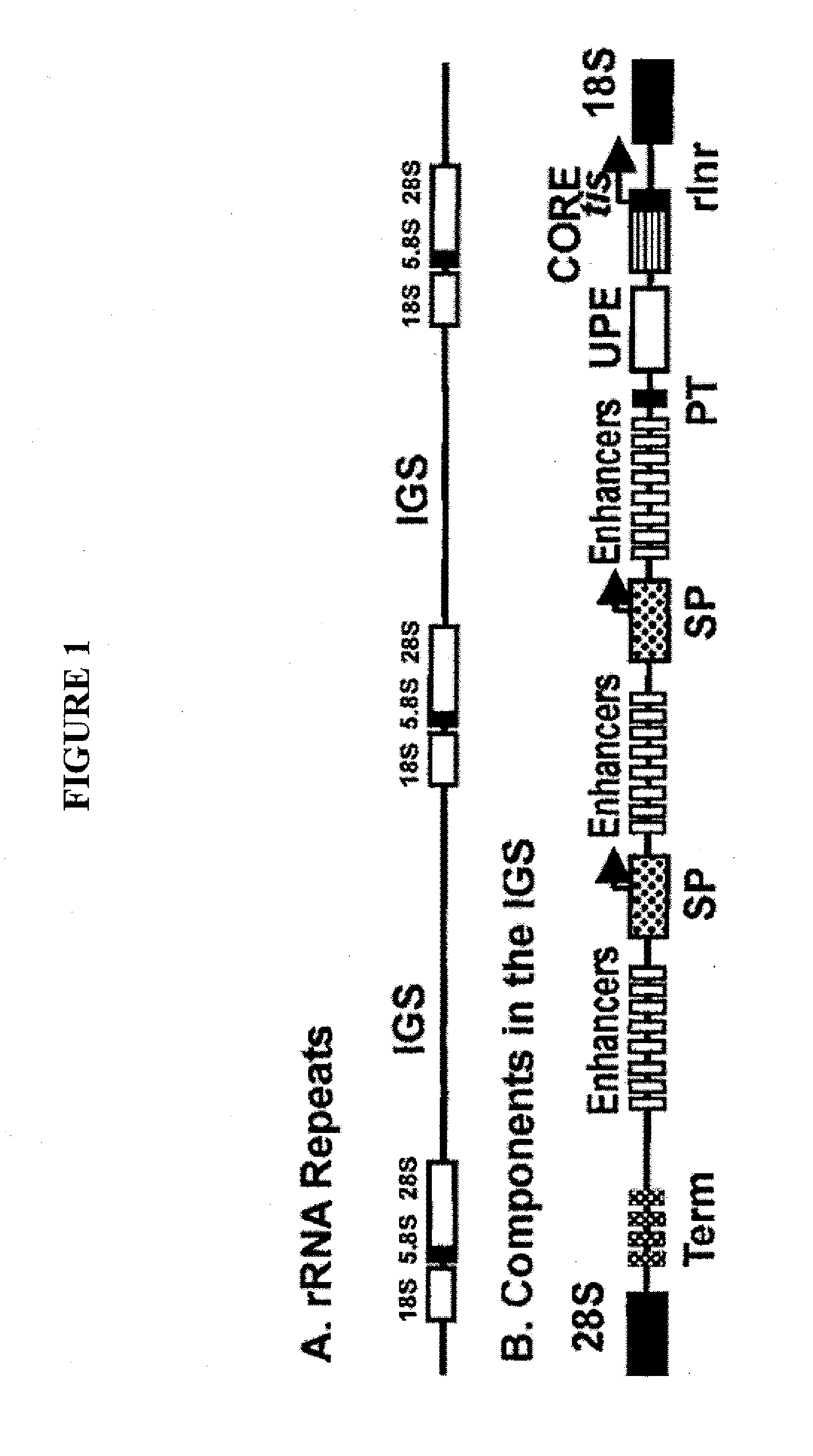Nuclear based expression of genes for production of biofuels and process co-products in algae
a technology of co-products and algae, applied in the field of algae gene expression, can solve the problems of inactiveness, no cosub>2/sub>-inducible promoters have been identified and utilized in algae,
- Summary
- Abstract
- Description
- Claims
- Application Information
AI Technical Summary
Benefits of technology
Problems solved by technology
Method used
Image
Examples
example 1
[0091]Use of vectors containing antibiotic-resistance genes as described in the Examples allow growth of algae on various antibiotics of varying concentrations as one means for monitoring nucleic acid introduction into host species of interest. This may also be used for gene-function analysis, for monitoring other payload introduction in trans or unlinked to the antibiotic-resistance genes, but is not limited to these applications. Cells are grown in moderate light (80 μE / m2 / sec) to a log-phase density of 1×106 cells / mL in appropriate seawater medium for plating. Transgenic antibiotic- or herbicide-resistant colonies appear dark green; the negative control is colorless and growth-inhibited after 21 days, preferably after 12 days, and more preferably after 10 days on liquid or solidified medium. Resistant colonies are re-cultured on selective medium for one or more months to obtain homogenicity and are maintained under the same or other conditions. Cell growth monitored in liquid cul...
example 2
Cloning of Ribosomal DNA Intergenic Spacer (IGS) DNA for Construction of Algae Nuclear Vectors
[0096]This example illustrates the construction of a baseline vector for nuclear integration and expression of genes of interest or sequences complementary to genes of interest.
[0097]Sequence alignment of publicly available sequences of the 18s and 28s rDNA of algal species is performed to design PCR primers. In one example, a forward primer having a target binding sequence of 5′-ctaaaggatgttgacacaatgtgatttctgc-3′ (SEQ ID NO: 9) and a reverse primer having a target binding sequence 5′-ccttggatgtggtagccatctctcatgctc-3′ (SEQ ID NO: 10) are used to amplify an IGS of the algae Chlamydomonas. Restriction enzyme recognition sites are engineered at the 5′ ends of the forward and reverse primers to facilitate subsequent cloning into a multicloning vector. Non-limiting examples of restriction enzyme sequences which can be engineered into the Chlamydomonas IGS PCR primers include: BamHI, EcoRI, HindI...
example 3
[0102]This example illustrates one possible method for construction of constitutive promoter sequences useful in the vectors disclosed herein.
[0103]Genomic DNA from of Paramecium bursaria Chlorella virus 1 (PBCV-1) is obtained using routine molecular biology techniques. The template DNA is in a PCR with the forward primer A434: 5′cgcgctcgagcgggtgtgatgtgagaaccaatactttgtagcg 3′ (SEQ ID NO: 15), that hybridizes to the 5′UTR of VP54, and the reverse primer A430: 5′ gccgctcgagatcgagttattgatactattacaaaag 3′ (SEQ ID NO: 16) that hybdrizes to a434L, a protein >800 bp upstream. The amplified product (SEQ DI NO: 17) includes the constitutive VP54 promoter, plus protein A431L coding sequence.
[0104]The resulting 812 bp product is cleaved with XhoI and cloned into the vector pMF124cGFPble (Fuhrmann et al, (1999) A synthetic gene coding for the green fluorescent protein (GFP) is a versatile reporter in Chlamydomonas reinhardtii. Plant J. 19:353-361). This cloning step replaces the vector's rbcS2 ...
PUM
| Property | Measurement | Unit |
|---|---|---|
| Nucleic acid sequence | aaaaa | aaaaa |
Abstract
Description
Claims
Application Information
 Login to View More
Login to View More - R&D
- Intellectual Property
- Life Sciences
- Materials
- Tech Scout
- Unparalleled Data Quality
- Higher Quality Content
- 60% Fewer Hallucinations
Browse by: Latest US Patents, China's latest patents, Technical Efficacy Thesaurus, Application Domain, Technology Topic, Popular Technical Reports.
© 2025 PatSnap. All rights reserved.Legal|Privacy policy|Modern Slavery Act Transparency Statement|Sitemap|About US| Contact US: help@patsnap.com


